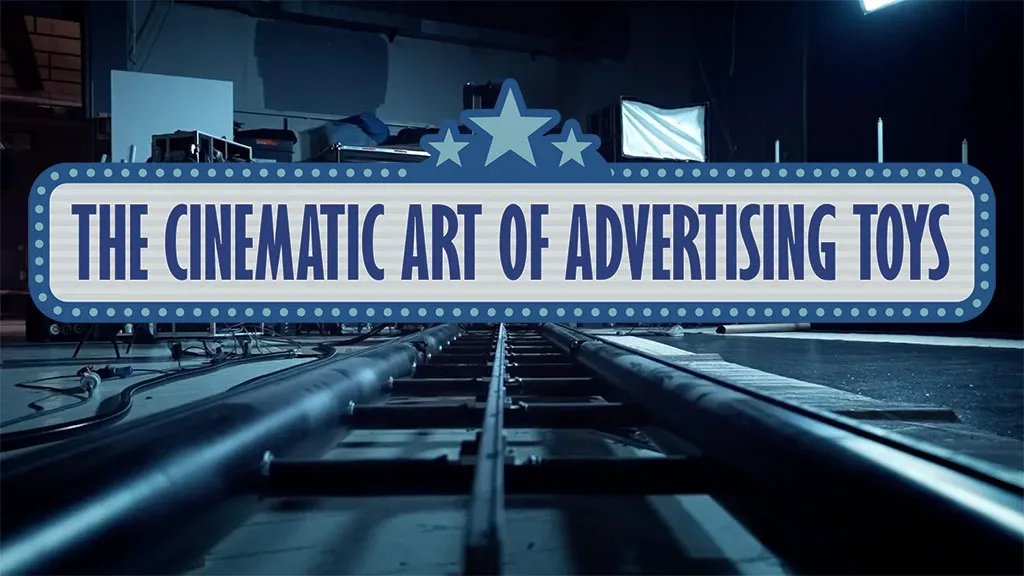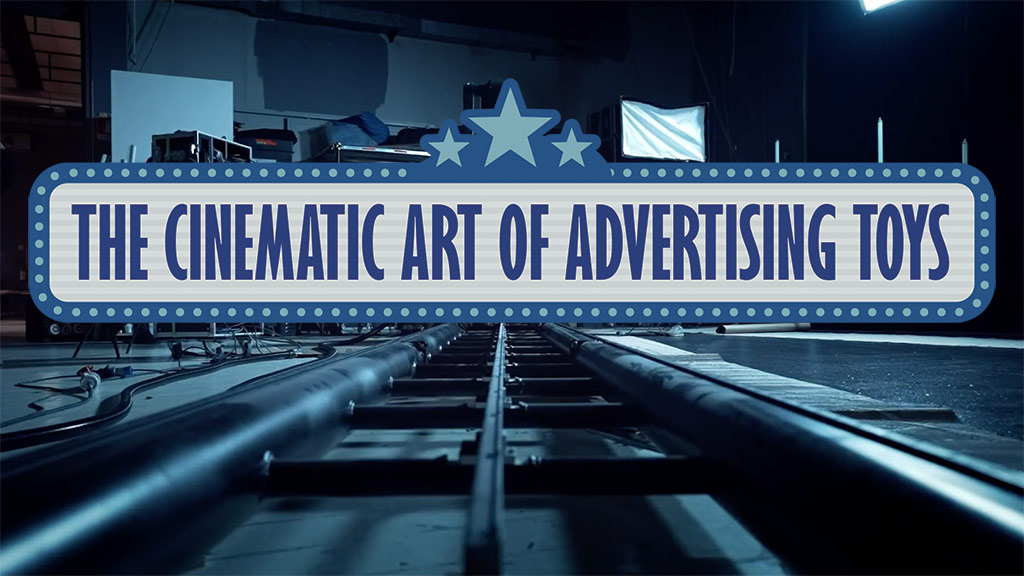
Platforms have changed, but video still drives sales.
On Wednesday, April 30, 1952, families across the U.S. settled in for a night of entertainment. In the midst of a commercial break, something different appeared on screen among the usual words from sponsors: a message encouraging kids to play with their food.
Looking for its first big retail sellout, Hasbro took a chance at advertising its new Mr. Potato Head toy directly to families on TV. The original toy was a box of plastic pieces (potato not included) that kids could use to make silly faces out of any tater in the kitchen. The toy was a smash hit that simultaneously launched the Potato Head brand, put the Hasbro name firmly in front of families, and created a new medium: the toy commercial.
In the 70 years since, toy commercials have evolved to become a specialized art. They are Hollywood-level films on a small scale, with a micro-size length of time to tell a story, inspire an emotional response, and, ultimately, result in tons of toys being sold.
A GLOBAL BUSINESS
Seventeen years ago, Danny Robashkin set up shop in Minneapolis as founder and creative director of MAKE Visual, a creative production company with a focus on storytelling. The company employs a team of creatives that utilize live action, animation, motion graphics, and visual effects to create engaging content for a wide range of clients, including Best Buy, Target, Adidas, Verizon, and Dunkin’. With his brother, Oren, serving as executive producer, Robashkin and MAKE began crafting toy commercials for companies like Hasbro with work across its partner brands, including Beyblade and Star Wars. The experience carved a path to recent work with Spin Master for PAW Patrol and Batman, Mattel for Matchbox cars and Hot Wheels Monster Trucks, and, for the past five years, the Hess Corp. for its annual Holiday Toy Truck commercials.
“Every toy commercial has to show what the toy is — its features and functionality — so the most successful commercials strike a good balance between showcasing the toy itself and the aspirational feeling of what it’s like to play with the toy,” Oren Robashkin says.
Nearly 5,000 miles away in Italy, Diaframma has been serving the toy industry for more than 40 years, crafting content for countless companies and brands, including MGA Entertainment (MGAE), Jazwares, Rubik’s, and VTech. Founded in 1976 by Daniele Abolaffio, the business got a makeover in 2010 when his son Duccio took the helm and heavily invested in new technology. Recent work has included spots for L.O.L. Surprise! (MGAE), Cats vs Pickles (Cepia), Micro Machines (Jazwares), Doodle Jamz (Sky Castle Toys) and Marvel Battle World Ulitmate Armory (Funko Games).
“The landscape of advertising for toys has changed dramatically in the past few decades, but there are three key elements that every successful toy commercial needs: attention-grabbing creative to cut through the noise in 15-30 seconds; a wow factor to sell what’s great about it; and catchy music, a jingle, or a tagline,” says Jehan Hindo, vice president of U.S. sales for Diaframma. “Everyone remembers the Mentos jingle.”
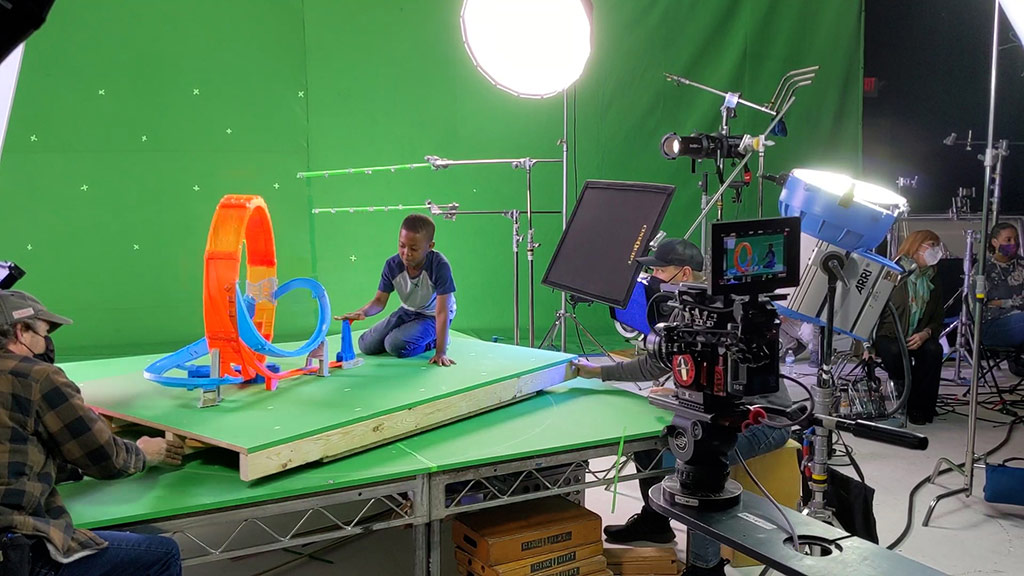
OLD TRICKS AND NEW TECH
Some of the most iconic toy commercials of all time first hit screens in the 1980s, and their techniques are still employed today, albeit in a highly advanced form. The key is world-building.
“Growing up, I would eat and breathe anything from He-Man and the Masters of the Universe, ThunderCats, SilverHawks, and Power Rangers,” Oren Robashkin says. “The commercials told a narrative that pulled me in by showing creative use of the characters from those shows as toys.”
The commercials of the ‘80s and ‘90s were often shot in themed environments created using physical sets on which kid actors played with the toys to emphasize their play value. Today, some studios still do it that way, while others favor creating digital sets and environments entirely in computer graphics (CG). It all comes down to client preference and budget. But now, modern digital tools are merging with old-school techniques, and one big inspiration comes from a galaxy far, far away: Star Wars.
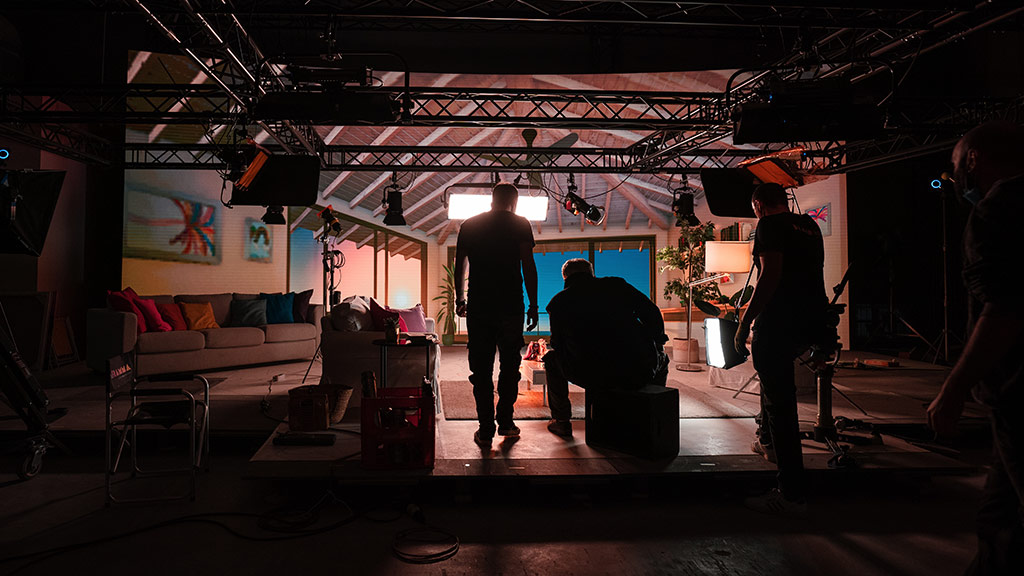
“Our biggest news this year is the addition of the LED Virtual Production Wall to the Diaframma family. It’s the same technology used in the production of The Mandalorian,” Hindo says. “This gives us infinite locations while being able to control every aspect of color, design, and branding. It’s a boundless creative space and a game-changer. In theory, it is a physical set design but in a virtual way.”
As with recent productions employing Disney’s The Volume production stage — a groundbreaking facility built to house StageCraft virtual visual effects technology — similar virtual production walls require physical set pieces to be used together with LED technology to create a seamless visual experience that feels entirely real.
Still, no matter how high-tech the business of selling toys might become, there is a very important human element that is required.
“Hands are 100% a must in regards to toy play and physical interaction,” Oren Robashkin says. “You will run into legal issues if you just push the toy into the frame without showing the hand activation. For many toys, having kid actors physically interact on camera will help indicate product size and how kids at home will actually interact with the toy or playset.”
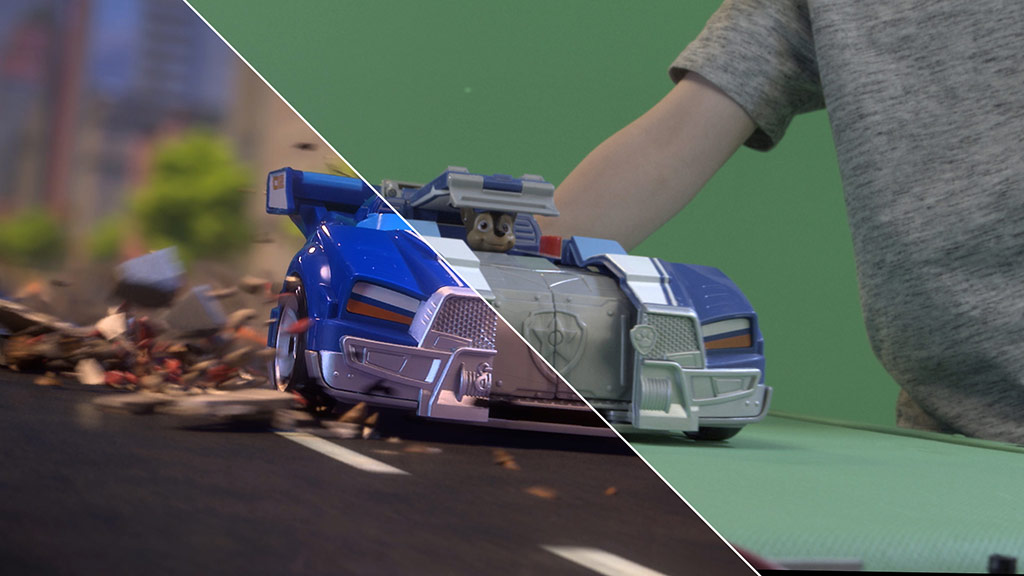
SPEED AND SOUND
Speed-to-market is increasingly important for manufacturers and retailers. As the time from factory to store shrinks, crafting a solid, multiplatform marketing plan needs to be done with a great sense of urgency. Being focused from the beginning and employing a media buying partner can help expedite decisions on formats, length, and placement.
“Production partners who are experts in their craft play a critical role in our brand launch plans,” says Laura Frerichs, chief marketing officer at Cepia, maker of Cats vs Pickles toys. “They have a seat at the table when discussing communication strategy and storytelling.”
While visuals can make a toy shine, there’s another element that can completely change the dynamic of a commercial: sound.
“The musical score of any commercial is just as important as the visuals the audience is seeing,” Hindo says. “It plays a big role in the storytelling from an emotional perspective.”
And, in an era of competing devices, the Robashkin brothers note that toy ads designed for digital consumption should also “work” with the sound off.
CRAFTING FOR COMPLIANCE
Toymakers should examine the nuances of advertising regulations for toys each year. Since commercials are multiplatform across linear TV, video-on-demand, over-the-top, and digital and mobile — including YouTube, Instagram, and TikTok — clear communication between client and creative is a must.
“The new guidelines that come out each year get a bit more restrictive and some countries are a lot more conservative than others, which makes it harder to make one commercial for worldwide usage,” Hindo says. “We are challenged to come up with creative ideas that are unique, but also follow the rules of how the product can be played with and not exaggerate expectations and features.”
Different projects call for different storytelling techniques, and that means even artistic choices can come under scrutiny. “It’s really helpful to have someone challenge your ideas with the goal of making them better and working through all of the details so that the product looks good and the commercial is in compliance with children’s advertising regulations,” Frerichs says.
MAKE’s Danny Robashkin says that his company seamlessly uses digital tools to blend physical toys to CG effects that are allowed to make the toys look great, but not over the top. “Many of the commercials we create involve a heavy dose of animation and special effects, so we often find ourselves walking a fine line,” he says. “Very often, a creative team will want to push special effects further, while the legal departments are usually overly cautious in their views.”
There is also a very different, arguably low-tech storytelling technique that’s back in favor and can raise legal eyebrows in how it’s used.
“Stop-motion has become very popular in the last couple years, but we need to be careful which products can be featured like that because it can be deceiving to kids who can’t read a disclaimer that the toy doesn’t actually move on its own,” Hindo says.
As toymakers place their bets on the next big hit, it’s important for them to be calculated. The right commercial could secure new toys a place in kids’ minds that will last well into adulthood.
“My Buddy and Kid Sister from Playskool, the original Galoob Micro Machines, and Mouse Trap from Milton Bradley commercials had unique qualities that always come to mind,” Hindo says. “They’re still fully memorable to this day, so there is definitely something to say about that!”
This article was originally published in the May 2022 edition of the Toy Book. Click here to read the full issue!

